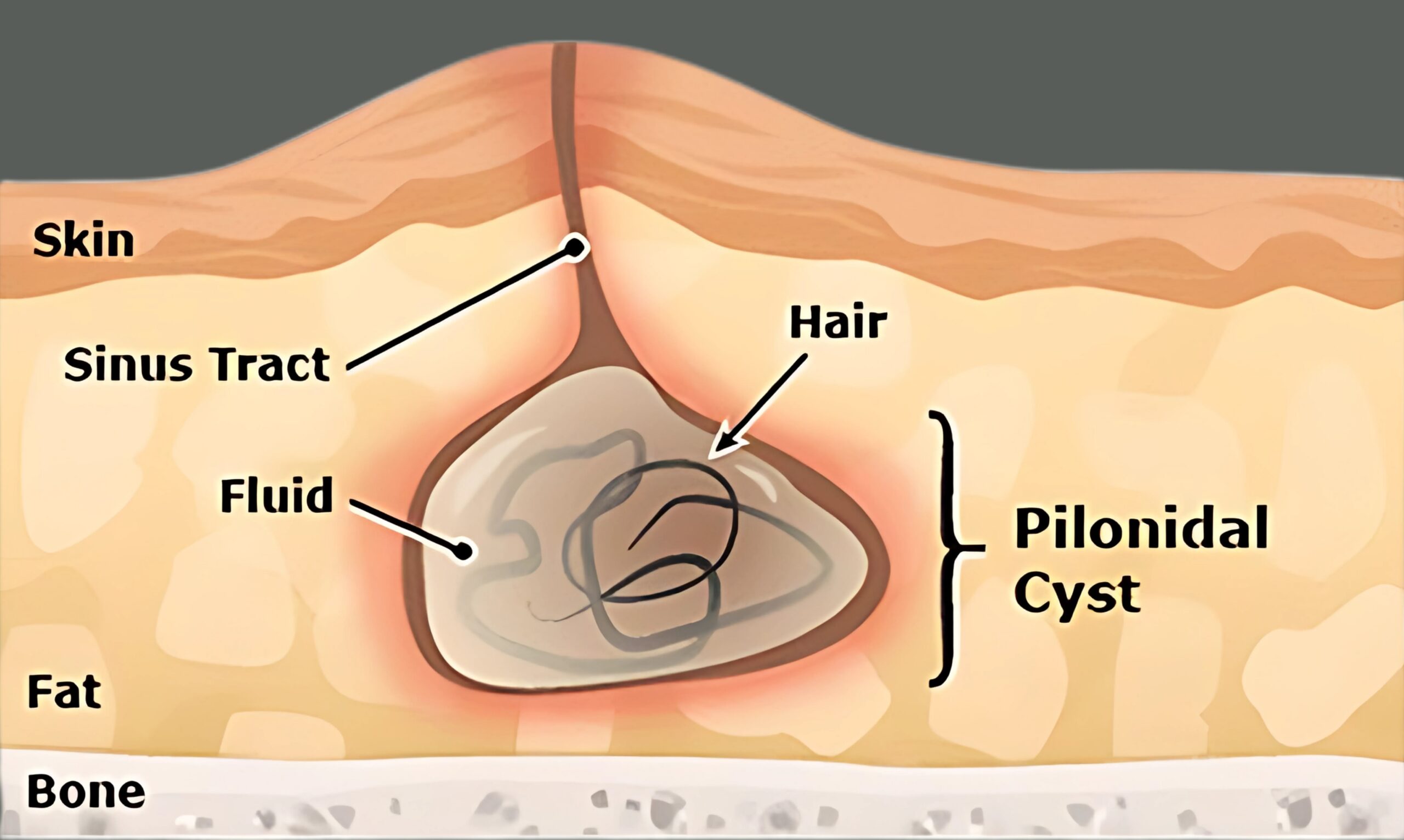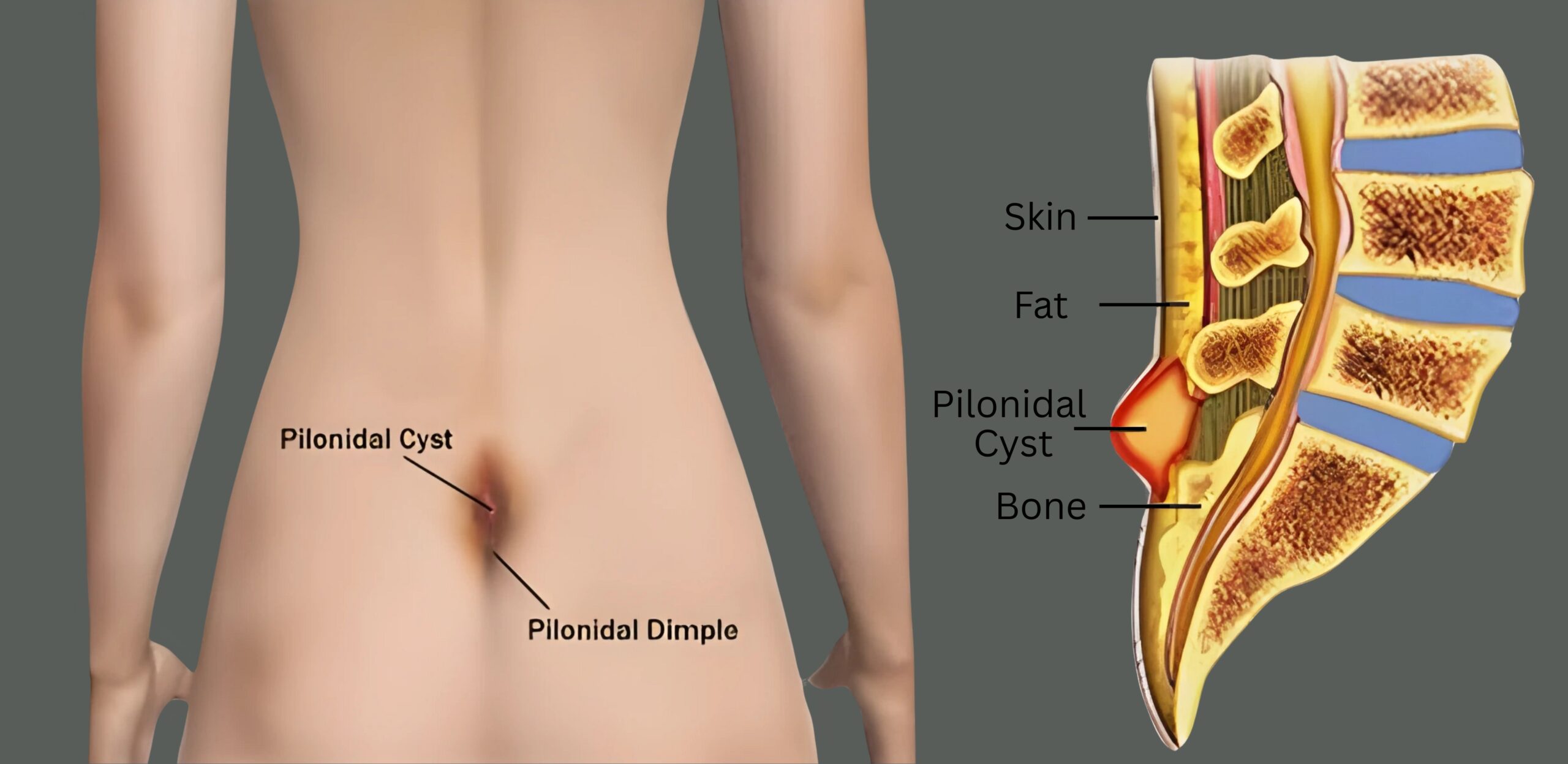Pilonidal Sinus Treatment
Pilonidal sinus treatment includes drainage, antibiotics, and surgery to remove sinus tracts, relieve pain, and prevent recurrence.

What is a Pilonidal Sinus?

A pilonidal sinus is a small tunnel or tract that forms under the skin near the tailbone (at the top of the buttocks crease). It often contains hair, skin debris, and fluid, which can lead to pain, swelling, and infection.
When infected, it can form a painful abscess that discharges pus or blood. Pilonidal sinus is a chronic condition that typically affects young adults and may recur if not treated properly.
Causes and Risk Factors
The exact cause is not always clear, but contributing factors include:
- Ingrown or loose hairs can pierce the skin and trigger infection.
- Extended pressure on the lower back or tailbone area can contribute.
- Excessive sweating or poor hygiene can increase the chance of developing it.
- Family history (genetic tendency).
- Higher prevalence in men, especially those with coarse body hair.
- Men, especially those with thick or coarse body hair, are more likely to get it.
Symptoms of Pilonidal Sinus

- Pain and swelling near the tailbone.
- Redness and tenderness in the affected area.
- Discharge of pus or blood from a small opening in the skin.
- Foul odor from draining fluid.
- Fever and discomfort (if infection spreads).
- Recurrent flare-ups, especially after sitting for long periods.
Traditional Treatment Options
Conventional treatments for pilonidal sinus include:
- Incision and drainage of abscesses (temporary relief but does not cure the sinus).
- Open surgery to remove the sinus tract (involves long healing time and painful wound care).
- Flap surgery in severe cases, which is invasive and requires hospitalization.
- Biolitec SiLaC® is a minimally invasive laser treatment for pilonidal sinus offering less pain, faster recovery, lower recurrence, and better cosmetic results.
These methods often require weeks of wound care and carry a risk of recurrence.

Why Choose Swift Day Surgery Center?
- Exclusive provider of Biolitec SiLaC® technology in the UAE.
- Expert surgeons trained in laser-assisted treatments.
- Day-surgery model – safe, comfortable, and efficient.
- Proven results with minimal downtime.
- Patient-centered care with focus on long-term success.
What to Expect – Patient Journey at Swift
Consultation & Assessment
Physical examination by a specialist
Imaging may be required for complex sinus tracts
Treatment Planning
Acute infections treated first (abscess drainage if necessary)
Definitive SiLaC® laser therapy planned once infection is under control
Laser Procedure (SiLaC®)
Performed under anesthesia
Duration: approximately 20–40 minutes
No hospital stay required (same-day discharge)
Recovery & Aftercare
Mild discomfort for a few days
Simple wound care instructions (hygiene, sitz baths)
Follow-up visit to confirm complete healing
FREQUENTLY ASKED QUESTIONS
Is laser treatment better than open surgery for pilonidal sinus?
Yes. Laser treatment is less invasive, less painful, and offers faster recovery with fewer complications compared to open excision.
How long does recovery take?
Most patients return to work within 2–5 days, depending on the severity.
Can pilonidal sinus come back after laser treatment?
Recurrence is much lower compared to traditional surgery, especially with proper hygiene and hair management.
Is the procedure safe?
Yes. Biolitec SiLaC® is clinically proven and internationally recognized for safety and efficacy.
How should I care for the area after treatment?
Follow your doctor’s instructions for cleaning, dressing changes, and hygiene. Avoid prolonged sitting initially to ensure faster healing.
Take the Next Step
If you suffer from pain, swelling, or recurring infections near the tailbone, it may be due to a pilonidal sinus. At Swift Day Surgery Center, we provide SiLaC® laser therapy by Biolitec — the most advanced, minimally invasive treatment available today.
Book your consultation now and experience faster healing with less pain and downtime.
